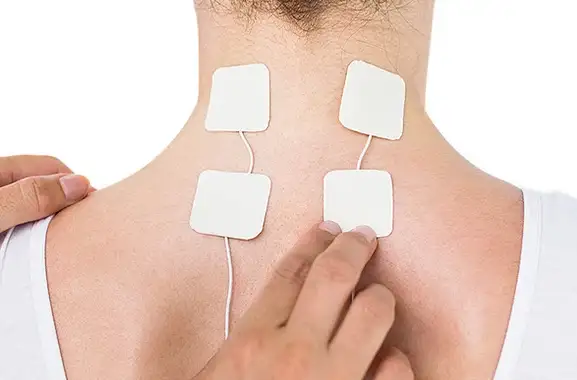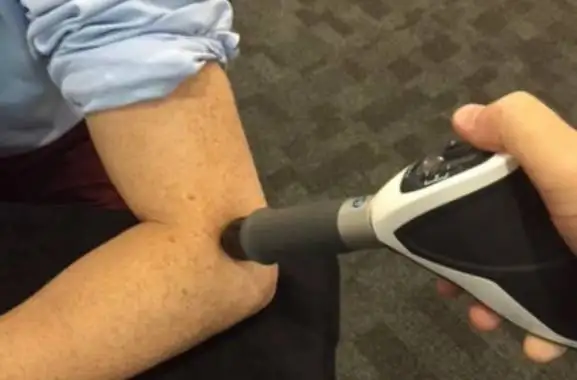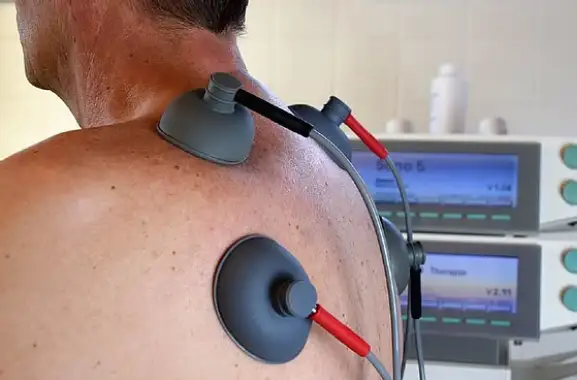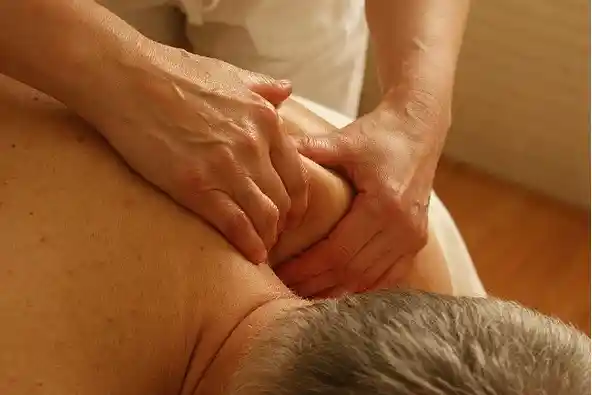Do You Need Pre and Post Surgical Physiotherapy Rehabilitation

Undergoing surgery can be a transformative experience, both physically and emotionally. Whether it’s a necessary medical procedure or an elective operation, the journey doesn’t end in the operating room. The steps taken before and after surgery are crucial to the outcome and speed of recovery. Pre-surgical and post-surgical physiotherapy are integral parts of this process, helping patients prepare for and recover from surgery. These therapies not only improve physical outcomes but also empower patients, reducing the anxiety and stress associated with surgical procedures. Understanding these therapies and their benefits can significantly impact your recovery trajectory. Effective recovery isn’t just about healing; it’s about preparing your body and mind to function better than ever. Let us guide you through each step of your surgical journey with tailored physiotherapy that targets your specific needs. Effective recovery isn’t just about healing; it’s about preparing your body and mind to function better than ever. Let us guide you through each step of your surgical journey with tailored physiotherapy that targets your specific needs.Effective recovery isn’t just about healing; it’s about preparing your body and mind to function better than ever. Let us guide you through each step of your surgical journey with tailored physiotherapy that targets your specific needs. This blog post will explore the essential roles of both pre-surgical and post-surgical physiotherapy. We will delve into their benefits, what they entail, and how they contribute to a faster and more effective recovery. Additionally, we’ll look at how Physiatrix Rehab tailors these therapies to fit individual needs. Pre-Surgical Physiotherapy: Maximizing Surgery Success Pre-surgical physiotherapy focuses on preparing your body and mind for the upcoming surgical procedure. Engaging in physical therapy before surgery can significantly enhance your strength and flexibility, which can lead to better surgical outcomes and a quicker recovery period. Key Components of Pre-Surgical Physiotherapy Include: Muscle Strengthening: Fortifying muscles around the surgery site to support and speed up healing. Flexibility Exercises: Increasing range of motion to help with post-surgical recovery. Pain Management Techniques: Learning how to manage and mitigate pain through non-pharmacological methods. Mental Preparation: Techniques to manage stress and mental preparation for the physical recovery process. Post-Surgical Physiotherapy: Enhancing Recovery Post-surgical physiotherapy begins immediately after surgery, targeting the restoration of function, mobility, and strength. The goal is to accelerate your recovery process, prevent complications, and ensure the long-term success of the surgical intervention. Critical Aspects of Post-Surgical Physiotherapy Include: Pain and Swelling Management: Utilizing techniques such as ice, heat, and gentle exercises to reduce swelling and manage pain. Regaining Mobility: Gradual exercises that begin with gentle stretches and progress to strength-building activities. Improving Circulation: Techniques to enhance blood flow to the affected areas, promoting healing and preventing blood clots. Education on Self-Care: Guidance on activities and lifestyle adjustments to ensure a successful recovery at home. Benefits of Pre and Post Surgical Physiotherapy Both pre- and post-surgical physiotherapy rehabilitation have many benefits that can help you. They allow you to prepare for the surgery both mentally and physically; they improve and restore the range of motion post-surgery, reduce pain and inflammation, improve muscle strength and control, and increase your overall well-being and fitness levels. The combined approach of pre- and post-surgical physiotherapy offers numerous benefits: Reduced Recovery Time: Patients often experience faster recovery rates. Decreased Pain and Complications: Effective management of pain and reduced risk of complications such as infections and thrombosis. Improved Outcomes: Better overall outcomes with increased mobility and functionality. Cost-Effectiveness: Potential reduction in the need for postoperative care and associated costs. A recent study demonstrated that pre-operative physiotherapy reduced the need for postoperative care by up to 29% in patients undergoing joint replacement surgery, resulting in significant cost savings. FAQ’s Conclusion: Empowering Your Journey Towards Recovery At Physiatrix Rehab, we understand that surgery is just one part of your health journey. Effective recovery depends on the care and expertise provided before and after the operation. Our tailored pre- and post-surgical physiotherapy programs are designed to prepare your body for surgery and support it through the recovery process, ensuring you return to your daily activities with confidence and strength. We are committed to your health and recovery, providing personalized care that addresses your specific needs. Whether you are preparing for a surgery or are in the recovery phase, our team of skilled physiotherapists is here to support you every step of the way. Contact Physiatrix Rehab today to schedule your consultation and start your path towards a quicker, more effective recovery.
5 Conditions Electrotherapy Can Treat

Did you know that electrotherapy originated in 63 AD in Rome, when Scribonius Largus stood on an electrical eel for pain relief? That’s how old the treatment is, but modern technology has just allowed it to be more accessible to the general public. Electrotherapy is a medical treatment where electrical impulses are sent across the skin to the target tissue that is causing the problem. The electrical impulse increases blood circulation in the target area, releases endorphins (pain-relieving hormones), or interferes with the pain nerves to relieve pain. Here are the most common conditions that can be treated with electrotherapy. 1) Nerve Related Pain or Phantom Pains Electrical stimulation therapy is highly effective in treating nerve-related pain, numbness, tingling, burning sensation or muscle weakness throughout the body, and even phantom pains. Usually, for this treatment, a TENS machine targets the painful nerves that carry the pain message to the brain. The electrical charge interferes with the pain signals and confuses them, reducing the pain. The results of TENS electrotherapy are long-lasting, too! 2) Musculoskeletal Pain or Injuries Musculoskeletal pains like tennis elbow, plantar fasciitis, carpal tunnel syndrome, jumper’s knee can be effectively treated with electrotherapy. During such treatments, low-intensity electrical impulses are sent past the skin to the target muscle. These impulses stimulate the tissue, improving the blood flow. The increased blood flow then promotes the healing of the tissue. 3) General Body Pain You may also suffer from general body pain, perhaps due to bad posture or a tweaked muscle. Such pains can also be treated using electrotherapy as it promotes tissue repair. It is the most recommended treatment method for general body pain as it is non-invasive, drug-free pain control that does not cause any side effects. This kind of treatment also doesn’t hurt at all, so it is the best way to relieve body pain. 4) Muscle Atrophy Muscle atrophy occurs when the specific muscles are not used for an extended time due to injuries, illness, or nerve damage. During muscle atrophy, the tissue starts to lose mass and start degenerating. If not addressed on time, it can lead to permanent disability. To prevent atrophy, electrotherapy is used to stimulate the target muscles. When the electrical charge reaches the tissue, it stimulates the muscles, contracts it, and improves blood flow. As a result, muscle atrophy can be prevented in patients. 5) Wounds Wounds are quite common, especially if you play any kind of sport. To heal these wounds, blood circulation is crucial. But sometimes, the blood circulation may not be enough to repair the damaged tissue. In such cases, you can opt for electrotherapy as electric currents can boost the blood flow in the injured region. This can speed up the healing process. Different forms of electric currents are used depending on the condition. And contrary to popular belief, electrotherapy doesn’t hurt at all. In most cases, it just leaves a slight tingling sensation on the skin for some time. So you don’t have to worry about any side effects! If you are facing any of the problems mentioned above, you should contact Physicatrx Rehab. We offer the best electrotherapy treatments in Surrey that can effectively treat your condition without any side effects. Book an appointment now.
How Can Physiotherapy Help with Ringing in the Ears

Affecting up to 15-20% of Canadians, tinnitus or ringing in the ears is quite a common problem for many. Although it is considered a condition, it is just a symptom of an underlying condition. If you have a constant buzzing or ringing sound in your ears that hasn’t stopped for a few days, you should consider physiotherapy as it can help you a lot. Causes of Ringing Ears The ringing of the ears is a broad condition that can be caused by various factors and health conditions; some are not so serious, while others can be. One of the most common causes of ringing ears is exposure to loud noises, like working in a noisy environment, listening to loud music, or riding loud motorcycles. Other reasons for ringing ears include ageing that leads to overall hearing loss, heavy alcohol consumption or smoking, and other severe health conditions like diabetes, heart conditions and allergies. Physiotherapy for Ringing Ears Over decades of research, it has been found that physiotherapy can be extremely useful in treating ringing in the ears. The first step in treating ringing ears with physiotherapy is identifying the trigger for the sound. For this, we examine the patient and evaluate their medical history. Once the trigger point is identified, the next step is to develop a meticulous physiotherapy plan to treat the condition. The treatment often includes exercise, but may also incorporate other physical therapy treatments like acupuncture or electrotherapy to target specific issues that are causing the problem. There are many ways in which physiotherapy can treat the condition, and it differs from case to case. For example, ringing caused by weak neck muscles can be treated by exercising the neck muscles. For ringing caused by a pinched or damaged nerve, electrical stimulation is often used. Most Common Physiotherapy Treatments for Ringing Ears Treating tinnitus is not as simple as taking medicines, and it does require a level of exercise and discipline. Here are the most common physical therapy treatments that are effective in treating tinnitus. Cervical Movements and Muscle Contractions This form of treatment includes repetitive cervical movements and exercises that work and contract your neck muscles. These movements include basic exercises that can be either active or passive, depending on your condition. With the help of these exercises, the neck muscles are strengthened, and the cervical spine mobility is brought back to a healthy normal. This works best if the ringing is caused by weak neck muscles. Stretching, Postural Training and Acupuncture Like the above form of treatment, stretching and postural training can also help reduce the stress on the muscles around your ears. In this form of therapy, the muscles are stretched to promote blood flow in the tissue. This is because the improved circulation of blood speeds up the healing process. In some cases, even acupuncture is recommended to promote blood flow if stretching routines aren’t enough. Electrotherapy (TENS) In the case of ringing ears caused by damaged tissue or upper cervical nerve C2, electrical stimulation like TENS is an excellent way to treat the condition. In this treatment, short bursts of electrical charge are sent through the skin to the target tissue to promote healing and stimulation. Although it sounds scary, electrotherapy is not invasive and does not offer any side effects, making them an excellent alternative to surgery. This is not all, other forms of physical therapy are cognitive behavioural therapy and deep breathing, but they are not as common. If you seem to be suffering from any of the issues mentioned above, you should contact Physiatrix Rehab. We offer class-leading physiotherapy in Surrey. Book an appointment now.
How Does Shockwave Therapy Work

Shockwave therapy is quickly gaining traction in the healthcare industry for many reasons. It is supported by science and has many benefits like: It is a realistic alternative to invasive surgery or medication It targets the cause not just the symptoms It has an 80% success rate It is quick with sessions lasting for 8-10 min With so many benefits, it is hard to look away from shockwave therapy. Yet, there are many doubts and anxieties about it, and the best way to dispel them is by learning how it actually works. So, here’s a short guide on how shockwave therapy can help you treat your condition. How Does Shockwave Therapy Work? In essence, shockwave therapy is a treatment method where a device is used to direct radial shockwaves to a specific part of the body. A trained, experienced therapist uses this device to treat your condition. Here’s how the process works. Preparation When you visit the therapist, the first thing they’ll do is determine the origin of pain. This can be anything from an injured muscle, tendon, or even bones. Once the pain area is identified, they will apply some gel to the area and start the preparation. Application Once the gel is ready, the therapist will use the shockwave machine on the target area. The shockwave machine is an ingenious piece of technology. It uses a fast-moving projectile encapsulated within the main body that is controlled by a compressor. This projectile transmits energy to the applicator, that is, the shockwave machine’s tip to general radial shockwaves. From the applicator, the radial shockwaves travel through your skin and into the target area. Your body absorbs these shockwaves. The therapist can set the shockwave frequency so that it only targets the intended target, without either surpassing it or falling short. Result When the target area absorbs the minute shockwaves, it starts producing substance P. The shockwaves also cause hyperstimulation of the pain sensors. Both combined lead to improved blood flow and metabolism in the region. This leads to an increased growth factor that starts healing the injury. Is It Right for You? Shockwave therapy can be used to treat a variety of conditions and injuries. It can target damaged tendons, bones, muscles, and connective tissues if they are hurting. In fact, it is so effective that it can also be used to treat neurological disorders like cerebral palsy and hemiplegia in some patients. The process itself is quite quick and straightforward. A single session lasts only 8-10 min, but the result is long-lasting. As mentioned before, an 80% success rate makes it a viable option to treat pain. And unlike toxic medications, shockwave therapy’s side effects only include redness and slight swelling, which are too rare conditions! Finding a shockwave therapy in Delta/Surrey is easy, but you shouldn’t go to any random physiotherapist. Shockwave therapy requires a high level of knowledge and experience, and should only be performed by the best. So, visit Physiatrix Rehab, a leading physiotherapy clinic in Delta/Surrey, offering various treatments, including shockwave therapy, low-level laser therapy, and electrotherapy. Book an appointment now!
5 Myths About Electrotherapy

There many ways to treat muscle injuries or problems; you can either take medications that mostly suppress the symptoms and may have side effects, you can opt for expensive and invasive surgery, or you can choose physiotherapy, specifically electrotherapy. It is a simple treatment that uses small electrical impulses the stimulate the nerves in the affected area, boosting blood flow and metabolism. It is a safe, non-toxic, and non-invasive alternative to medicines and surgery. Yet, many myths around it keep people from opting for it. Some of the top ones are. 1) It is Painful Intentionally running electricity through your body sounds scary and stupid, right? But not for physiotherapists. The physiotherapy procedure uses bioelectric devices that transmit extremely minimal frequencies to your body. There is no pain or discomfort, although you do feel a slight tingling sensation for some time. 2) It Doesn’t Work People often club physiotherapy and electrotherapy with other quack medicines, but they’re wrong. Electrotherapy is backed by science and decades of research into it, and it has been proven to change people’s lives for the better. Of course, it is not a miracle cure for your illness, but an alternative pain management therapy that works on most people. This is why many doctors also recommend electrotherapy if you want to avoid the side effects of medicines. 3) It Only Works for Sports Injuries Electrotherapy is largely used to treat injuries in the muscles without using toxic painkillers and invasive surgeries. This does not mean that it only works on sports injuries. The applications of electrotherapy go far and wide, and anyone with a muscle issue, be it a sprain, tear, or fatigue, can use electrotherapy to find relief. 4) It is Expensive The idea that electrotherapy is expensive was once true, but not anymore. Now, the devices are cheap, and there are many physiotherapists certified to conduct the procedure. It is easier than ever to find electrotherapy clinics now! 5) Anyone Can Perform Electrotherapy Even though the electrotherapy machines are cheap and the education accessible, not everyone can perform electrotherapy. It is a specialized branch of electrotherapy that must only be performed by someone qualified, certified, and experienced in the treatment, and not otherwise. Getting your electrotherapy treatment from someone incompetent can lead to further tissue damage that may be irreparable, and it can also cost you a lot of money in the long run. It is best to only choose a well-reputed physiotherapy clinic to perform electrotherapy in Surrey. With these myths debunked, it will now be easier for you to make a decision and choose electrotherapy to treat your injury or illness. After all, why not? It is a safe, reliable, and quick way to treat muscle problems without breaking your bank! For more detailed information to know if electrotherapy is right for you, contact Physiatrix Rehab right away. Our experienced therapists will guide you through the entire process at ease.
Excellent Solutions for Your Back Pain

Nearly 80% of Americans suffer one or another kind of back pain, so don’t worry, you are not alone. Such back pains are usually triggered by strenuous activities, age, or sometimes merely bending down. Whatever the cause, it is vital that you address your back pain before it gets worse and requires surgery. There are many back pain solutions available in Surrey, but not all are good for you. For example, anti-inflammatory drugs or muscle relaxants. They simply curb the pain without offering any long term solution, and they can have many unwanted side effects. Lucky for you, there are other excellent back pain solutions, such as. Lifestyle Changes The easiest way to deal with back pain is to improve your lifestyle. This includes using memory foam mattresses and the right-sized pillows to sleep on, using high-quality office chairs, and not sitting in bad posture throughout the day. Other solutions include not lifting heavy objects, wearing the right kind of footwear, and avoiding stress. Making such lifestyle changes can be a bit difficult, but they are totally worth it. Diet Another back pain solution is improving your diet, and it goes hand in hand with lifestyle changes. Many foods are high in inflammatory substances, especially trans fats, refined sugars, and processed food. These types of foods can cause back pain. So, improving your diet and avoiding foods high in inflammatory substances can significantly reduce your back pain. Meditation Back pain has been linked to mental stress. So, you can even try meditation to relax during the day. It is easy to do, and you don’t need more than 15 minutes a day to meditate, but it can have amazing results on your mental health and back pain. Yoga Many studies have shown that yoga is one of the best ways to deal with pain, especially back pain. It works your muscles and joints, unlike any other exercises, improving your strength and flexibility. Yoga also significantly corrects your posture. This makes yoga one of the best back pain solutions that you can try. Physical Therapy You must be wondering why we haven’t mentioned working out yet, and you’re right to do so. The reason is, workouts put a lot of stress on your back. It can improve your condition, but if you do it the wrong way, it can worsen the pain and cause further damage. Instead, we recommend physical therapy. During a physiotherapy treatment, a skilled therapist studies your lifestyle, medical history, age, strength, et al. to come up with a physical exercise plan, and guides you along the way. Physiotherapy is the best back pain solution, and it is carried out under the guidance of a therapist, minimizing any risk of injury that usually comes with conventional exercises. For more details on how physiotherapy can help you with back pain, book an appointment with Physiatrix Rehab right now. We offer a variety of solutions for back pain, including low-level laser therapy, electrotherapy, active rehab, etc.
Physiotherapy for Smooth Neck Movement

Are you suffering from neck pain, or does your neck feel stiff when you try to move your head? Don’t worry, you’re not alone. Neck movement issues are very common. After all, your neck is a complex structure that links your head to the body, and it has an extensive network of nerves, blood vessels, muscles, tendons, bones, and ligaments. Due to such high use, the neck often becomes a stress point in your body. Most Common Causes of Neck Movement Issues Neck movement issues are caused by a variety of factors, some simple and some complicated. The most common cause, however, is physical stress that is caused by bad posture, accidents, whiplash, or concussion. Neck movement issues can also be caused by pinched nerves, degeneration, or simply aging. The Solution There are many ways to solve neck movement problems: medications, surgery, exercise, and physiotherapy. However, physiotherapy is the most preferred around Surrey. Drugs often only curb the symptoms and may have harmful side effects. Surgery is not preferred, as it is risky and expensive. On the other hand, working out works wonders, but if you do it the wrong way, it can worsen your condition. Thus, physiotherapy for neck problems is the most preferred. Physiotherapy for Neck Issues Physiotherapy for neck issues is a proven way to solve neck movement issues without medications or surgery. In a physical therapy treatment for neck, physical therapies are applied to the neck and corresponding muscles to reduce pain and stiffness. Once the pain and stiffness are reduced enough to not cause pain, the physiotherapist then begins an exercise program for your neck to strengthen it. The goal of physiotherapy for the neck is to permanently reduce pain and stiffness so that it does not occur in the future. This is something medicines does not guarantee. Physiotherapy drastically improves the range of motion of your neck and develops dynamic strengthening to prevent pain in the future. Common Physiotherapy Methods Your physiotherapist will design the physical therapy that suits you the best, depending on your fitness levels, medical history, and age. Here are the two most common umbrella methods that are used to fix neck movement issues. Passive Physical Therapy In passive physical therapy, the therapist uses the treatment on your neck muscles without you having to put any effort. There are various ways to do this, including heat therapy, massage, ultrasound, electrotherapy, etc. This is primarily done to reduce pain and swelling enough so that you can start doing the exercises on your own without pain. Active Physical Therapy Active physical therapy is for patients who do not have severe movement issues, but it can also follow passive physical therapy for many patients. Here, you have to do the exercise on your own. The main goal of active physical therapy is to make the movement of the neck less painful by strengthening your neck muscles and reducing stress on them. To solve your neck movement problem quickly without any negative side effects, contact Physiatrix Rehab – a highly experienced team of physical therapists in Surrey. We offer the best physiotherapy programs to solve your neck problem at the earliest.
How to Safely Return to Sports Post COVID-19

Learn how to Safely Return to Sports Post COVID-19.
How Excessive Sitting Affects your Body

We, humans, live a sedentary lifestyle. We spend about 51 hours, 44 minutes of our weekly time being seated. And this lifestyle is not restricted to adults. Our children, too, spend a considerable amount of time sitting at school, during commute, or at home. Prolonged sitting can have detrimental effects on our body, severely affecting our posture and general health. The treatment for the effects can range from small lifestyle changes to even complicated surgeries. We will now talk about four significant negative impacts of excessive sitting on our bodies so that you can be aware of how dangerous sitting for long hours can actually be. Increased Backpain Sitting continuously for an extended period puts stress on your back muscles, spinal cord, and the neck. The pain caused by excessive sitting can become severe if you slouch while sitting. You can adopt a good sitting posture to maintain a healthy back and spine and reduce back pain. Still, it is not recommended to sit for long periods. If you’re currently facing back pain issues, you can opt for traditional or virtual physiotherapy in Surrey, or consider a reliable local physiotherapist. Increased Obesity Sitting for hours on end can slow down your metabolism and the capability to burn fat. Thus, you are likely to pile on extra kilos if you live the life of a couch potato (the television may or may not be involved). Even tasks such as reading for extended periods can cause the same negative effects. If you’re not keen on exercising, a simple act such as doing the same activities standing can help you burn 30 percent more calories, helping you keep your weight in check. Reduced Mortality Prolonged sitting can reduce your lifespan significantly. According to a study, long periods of sitting time was a cause of 14 of the 22 deaths measured. Excessive sitting can cause multiple issues such as increased blood pressure and high blood sugar that can become a contributing factor for early death. If your profession requires you to sit for long periods, you are more likely to experience deterioration in your cardiovascular health. You are most likely to suffer from heart diseases if you sit for long hours during work. This is evident from a study conducted on London transport workers. The study found that employees in positions that required high physical activity had lower rates of coronary heart disease. The primary reason is that due to a non-active lifestyle, the heart’s blood pumping capability is not challenged. This impacts endurance, metabolism, blood pressure and other factors that increase the risk of a heart attack. As a primary measure to counter the negative impacts of sitting, you can reduce the amount of time you sit in a day. If that’s not feasible or if you are currently experiencing severe back pain due to prolonged sitting, you can consider physiotherapy in Surrey at a reputed physiotherapist for treatment or general consultation.
How to Fix a Frozen Shoulder

A quick question: What’s worse than getting a cold shoulder? A frozen shoulder! It was just a joke to bring a smile on your face if you are suffering from the terrible pain of frozen shoulder On a serious note, having a frozen shoulder is not a happy situation to be in. When the tissues in your shoulder joint become thicker and tighter, scar tissue develops over time. As a result, your shoulder joint doesn’t have enough space to rotate properly. This causes your shoulder to experience stiffness or what we term as a ‘freeze.’ The treatment for frozen shoulder can vary from simple pain-relieving medications to frozen shoulder therapy to even shoulder surgery, depending upon the severity of the condition. We will now explain various solutions available to deal with this painful condition. Medication Over-the-counter pills are available that can help provide relief. Anti-inflammatory drugs such as Ibuprofen and others that we will prescribe help with non-severe cases. These pills help reduce the pain and inflammation associated, providing you with much-needed relief from shoulder pain. Medications can help you get relief from a frozen shoulder in most cases, but if they don’t, we will suggest other options such as physical therapy or surgery. Physiotherapy Physiotherapy can prove to be the perfect treatment for most cases of frozen shoulders. We will recommend and teach exercises that can help increase the shoulder’s range of motion and reduce pain after a detailed examination. These exercises can be done at the comforts of your home without the need for special equipment. The recovery rate, however, will be determined by your commitment. The frozen shoulder therapy also includes regular shoulder massage sessions that can help alleviate the pain and speed up further recovery. You can opt for our mobile physiotherapy if you wish to get the treatment from home. Also, our in-home massage therapists will ensure that you get complete relief without looking for therapists outside. Surgery We might recommend you to opt for surgery if other treatment methods haven’t produced the desired results. The possibility of undergoing surgery for a frozen shoulder is relatively low, but the possibility can’t be ruled out. The operation is carried out to remove scar tissue that causes discomfort and pain from inside your shoulder joint. The procedure involves inserting pencil-sized tools through tiny incisions in the shoulder region to remove the said tissue. It isn’t as scary as it sounds! While over-the-counter medications can help in relieving shoulder pain, the effects are temporary. Conversely, surgery and other medical procedures should only be opted for in severe cases. You can find the middle ground with frozen shoulder therapy that can help effectively treat frozen shoulders. But don’t worry about anything; we are here to help you. To book an appointment, get in touch with us.
